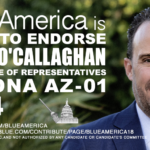[oldembed width="420" height="245" src="https://www.msnbc.msn.com/id/32545640" flashvars="launch=46530464^75769^1107174&width=420&height=245" fid="2"]
Once again, the best discussions on Sunday morning happen on Up with Chris Hayes. This is a 17 minute clip, and impossible to clip, because all of it is so much more intelligent than anything the other bobbleheads try to do.
It also exemplifies a very real schism within the left on how to approach the unrest in Syria. On the right, it's an automatic call for American intervention, but on the left, we tend to be more nuanced.
Former White House Director of Policy Planning Anne-Marie Slaughter wrote an op-ed last week for the NY Times which called for the "humanitarian" need to protect Syrians from slaughter by creating "no-kill" zones and arming members of the resistance:
Simply arming the opposition, in many ways the easiest option, would bring about exactly the scenario the world should fear most: a proxy war that would spill into Lebanon, Turkey, Iraq and Jordan and fracture Syria along sectarian lines. It could also allow Al Qaeda and other terrorist groups to gain a foothold in Syria and perhaps gain access to chemical and biological weapons.
There is an alternative. The Friends of Syria, some 70 countries scheduled to meet in Tunis today, should establish “no-kill zones” now to protect all Syrians regardless of creed, ethnicity or political allegiance. The Free Syrian Army, a growing force of defectors from the government’s army, would set up these no-kill zones near the Turkish, Lebanese and Jordanian borders. Each zone should be established as close to the border as possible to allow the creation of short humanitarian corridors for the Red Cross and other groups to bring food, water and medicine in and take wounded patients out. The zones would be managed by already active civilian committees.
Establishing these zones would require nations like Turkey, Qatar, Saudi Arabia and Jordan to arm the opposition soldiers with anti-tank, countersniper and portable antiaircraft weapons. Special forces from countries like Qatar, Turkey and possibly Britain and France could offer tactical and strategic advice to the Free Syrian Army forces. Sending them in is logistically and politically feasible; some may be there already.
Crucially, these special forces would control the flow of intelligence regarding the government’s troop movements and lines of communication to allow opposition troops to cordon off population centers and rid them of snipers. Once Syrian government forces were killed, captured or allowed to defect without reprisal, attention would turn to defending and expanding the no-kill zones.
But Jeremy Scahill, who has written some of the best and conventional wisdom-challenging journalism about the Middle East, thinks this is just more of the same short term thinking that gets the US in trouble again and again. And there's good arguments for both (though I fall short of Slaughter's op-ed. There's no evidence that Syria poses a threat to the US at all and the vague allusions to Al Qaeda is eerily reminiscent of Bush administration-era scare-mongering) and certainly, the desire to intervene against such horrifying examples of brutality is understandable. Nevertheless, as Spencer Ackerman writes:
Then there’s a more general problem with the Responsibility to Protect, as instantiated in Syria. The endgame of Slaughter’s proposal is a “regional, and ultimately national, truce.” Then what? Do the international forces go home? Do they still patrol the “no-kill zones”? Why, on the day after the truce, with Assad still in power, do both sides — and particularly Assad — bide time until a renewed attack looks advantageous? Do foreign forces stop arming the rebels after the truce?
Now, why do I say this is a broader problem with the Responsibility to Protect? Because it shows that the R2P is a military endeavor that still lacks actual, substantive objectives for militaries to achieve. If I am one of the Qatari SOF captains who has to aid the “no-kill zones,” I don’t know from Slaughter’s guidance how to design my operational campaign. I get that I have to help the Free Syrian Army clear out a “no-kill zone” of loyalist Syrian troops; I can presume that I must hold that zone. But what happens when I get mortar fire from the loyalists who’ve pulled back? Does protecting that zone mean I can push it outward? If it does, then I am escalating the objectives as Slaughter has described them; if it doesn’t, then I have failed to hold the no-kill zone. This is a military illogic that is all over the R2P. Advocates don’t want to concede that they’re actually calling for regime change — often, they don’t want to call for regime change — so they stop short of that, and call for separating combatants in the hope that a deus ex machina materializes. But the further they stop short, the more problems they hand off to the military commanders who must implement the R2P.
Bottom line: while there is nothing more horrifying than the violence we hear happening under Assad and I think Scahill is probably closer to the truth than Slaughter in terms of there being manifestly a civil war under way. But it cannot be the US interfering to decide the outcome for the Syrians. We cannot afford another open-ended, nebulous deployment that only causes resentment among the citizenry.


















